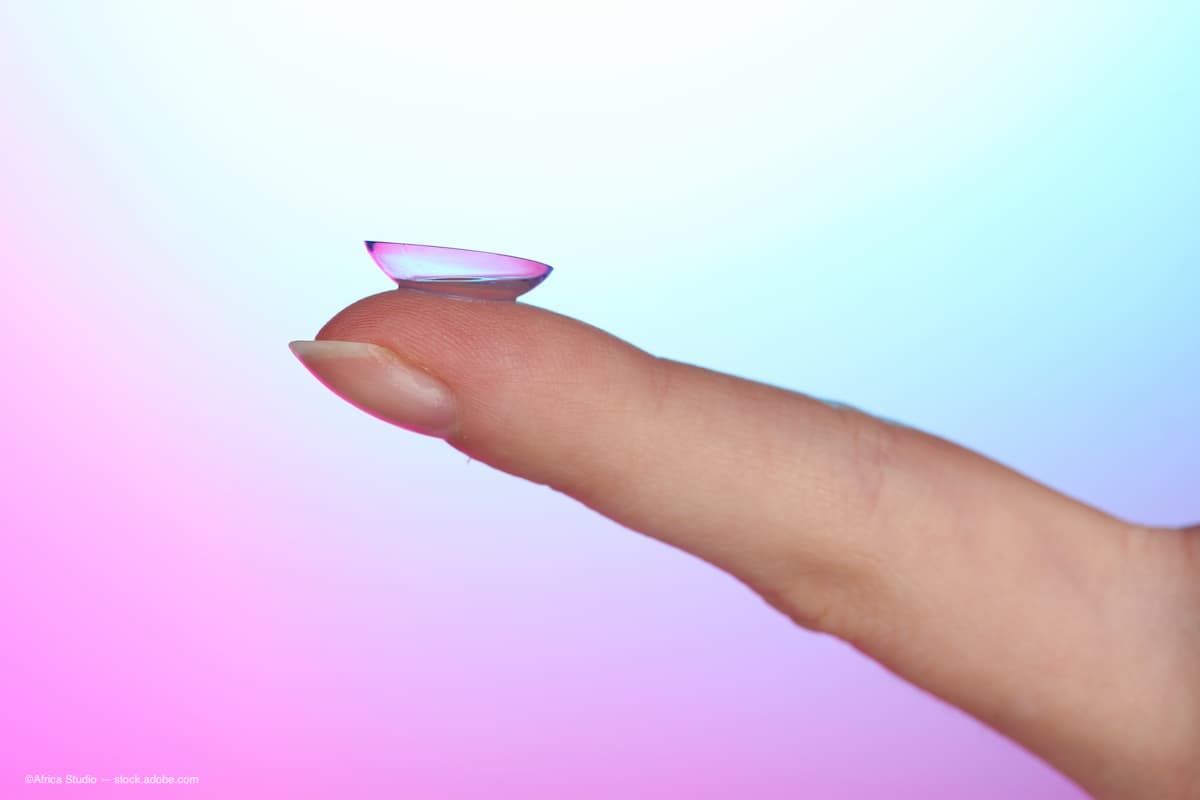News
Article
ASRS 2024: New data for Susvimo demonstrates sustained efficacy in DME, DR
Author(s):
The 2-year Phase III data presented at the American Society of Retina Specialists 2024 in Stockholm, Sweden, show Susvimo’s potential as an alternative to eye injections to treat diabetic macular edema and diabetic retinopathy.
(Image Credit: AdobeStock/ธนากร บัวพรหม)

Genentech, a member of the Roche group, announced 2-year data from the Phase III Pagoda and Pavilion studies evaluating Port Delivery System with ranibizumab (Susvimo) for the treatment of diabetic macular edema (DME) and diabetic retinopathy (DR), the 2 leading causes of vision loss in adults with diabetes.
Detailed results were presented at the American Society of Retina Specialists (ASRS) 2024 Annual Meeting in Stockholm, Sweden.
According to a news release, Susvimo is the first and only refillable eye implant that provides continuous delivery of a customized formulation of ranibizumab via the Port Delivery Platform.1
Susvimo is a refillable eye implant surgically inserted into the eye during a one-time, outpatient procedure. It continuously delivers a customized formulation of ranibizumab over time.
The company noted that ranibizumab is a vascular endothelial growth factor (VEGF) inhibitor designed to bind to and inhibit VEGF-A, a protein that has been shown to play a critical role in the formation of new blood vessels and the leakiness of the vessels.
The results build on the primary 1-year analyses of the Pagoda and Pavilion studies, with Susvimo demonstrating sustained efficacy over two years and safety consistent with the known safety profile for Susvimo in people with DME and DR.
Additionally, the FDA has accepted Genentech’s supplemental Biologics License Application (sBLA) for Susvimo for the treatment of DME and DR. The filing acceptance is based on the one-year results from the Phase III Pagoda and Pavilion studies, which showed that both studies met their primary endpoint.
To date, Susvimo is approved in the US for the treatment of neovascular or wet age-related macular degeneration (nAMD).
Levi Garraway, MD, PhD, the company’s chief medical officer and head of Global Product Development, pointed out the efficacy and safety results demonstrate that Susvimo can deliver robust vision outcomes over 2 years for people with diabetic eye diseases that can cause vision loss.
“If approved by the US FDA, Susvimo could bring a new treatment paradigm for diabetic eye diseases,” he said. “We hope to bring this option to people with diabetic macular edema and diabetic retinopathy as soon as possible to help maintain their vision and potentially their independence.”
According to the news release, treatment for DME typically involves regular eye injections every one to four months. In Pagoda, people with DME who received Susvimo refilled every six months achieved non-inferior visual acuity gains compared with those receiving monthly 0.5 mg ranibizumab intravitreal injections.
Approximately 95% of patients treated with Susvimo did not need additional treatment with supplemental injections during the primary analyses study period (64 weeks). In Pavilion, people with DR who received Susvimo refilled every nine months achieved superior improvements on the Diabetic Retinopathy Severity Scale (DRSS) compared with participants under monthly clinical observation. No individuals treated with Susvimo needed additional treatment with supplemental injections during the primary analyses study period (52 weeks), compared to 60% in the control arm.1
Two-year Pagoda and Pavilion results presented at ASRS
In Pagoda, people with DME receiving Susvimo refilled every six months through approximately two years (112 weeks) continued to maintain improvements in vision gains seen at one year (9.8 eye chart letters).
Pagoda (NCT04108156) is a multicenter, randomly assigned, active treatment-controlled, non-inferiority US-based Phase III study evaluating the efficacy, safety and pharmacokinetics of Susvimo refilled every 6 months compared with monthly ranibizumab 0.5 mg intravitreal injections, in 634 people with diabetic macular edema.
A gain of 9.8 eye chart letters is similar to gaining 2 more lines on an eye chart. Approximately 95% of individuals did not need additional treatment with supplemental injections. Anatomically, Susvimo showed sustained improvements in central subfield thickness (CST) through week 112. Reduction in CST, a measure of retinal drying, is an indicator of swelling from fluid in the back of the eye caused by unstable, leaky blood vessels.1
The safety data were consistent with the known safety profile for Susvimo in people with DME, with no new safety signals observed. In people treated with Susvimo, no cases of endophthalmitis were reported up to one year and the rate of endophthalmitis through week 112 was 0.7%, compared to 0.8% in the control arm. Refills of Susvimo were resumed in affected participants after successful resolution of endophthalmitis.
In Pavilion, people with DR receiving Susvimo refilled every nine months through approximately two years (100 weeks) maintained DRSS improvements seen at 1 year. Specifically, at week 100, 80% of Susvimo participants achieved a two-step or greater improvement on the DRSS from pre-implant baseline, and participants who received Susvimo from week 64 either maintained or improved their DRSS score from pre-implant baseline. A two-step or greater improvement in the DRSS is a clinically relevant measure of the decrease in risk for developing vision-threatening complications secondary to diabetes.
Approximately 98% of participants treated with Susvimo did not need additional treatment with supplemental injections. The safety data were consistent with the known safety profile for Susvimo in people with DR, with no new safety signals observed. In people treated with Susvimo, no cases of endophthalmitis were reported up to one year and the rate of endophthalmitis through week 100 was 0.8%. One participant with DR developed endophthalmitis and continued receiving treatment with Susvimo refills after successful resolution.
Pavilion (NCT04503551) is a multicenter, randomly assigned, US-based Phase III study evaluating the efficacy, safety and pharmacokinetics of Susvimo 100 mg/mL refilled every 9 months compared with people under monthly clinical observation, in 174 people with diabetic retinopathy without center-involved diabetic macular edema.
Reference:
Ltd FHLR. New data for Roche’s Susvimo demonstrates sustained efficacy in two serious diabetic eye conditions. GlobeNewswire News Room. Published July 18, 2024. Accessed July 18, 2024. https://www.globenewswire.com/news-release/2024/07/18/2915163/0/en/New-data-for-Roche-s-Susvimo-demonstrates-sustained-efficacy-in-two-serious-diabetic-eye-conditions.html
Newsletter
Don’t miss out—get Ophthalmology Times updates on the latest clinical advancements and expert interviews, straight to your inbox.




